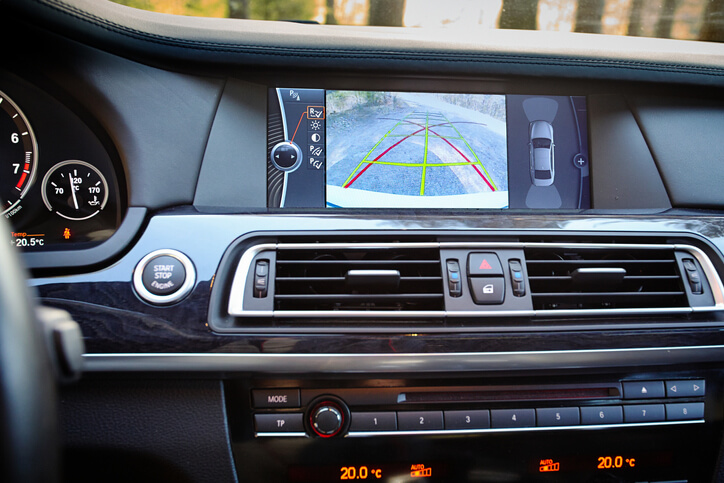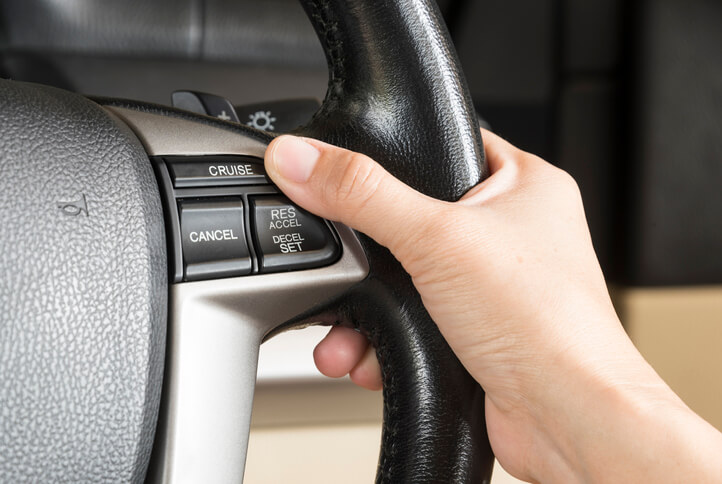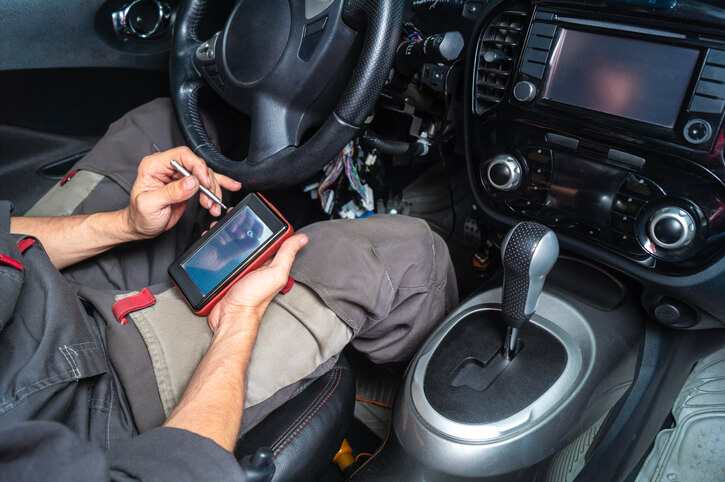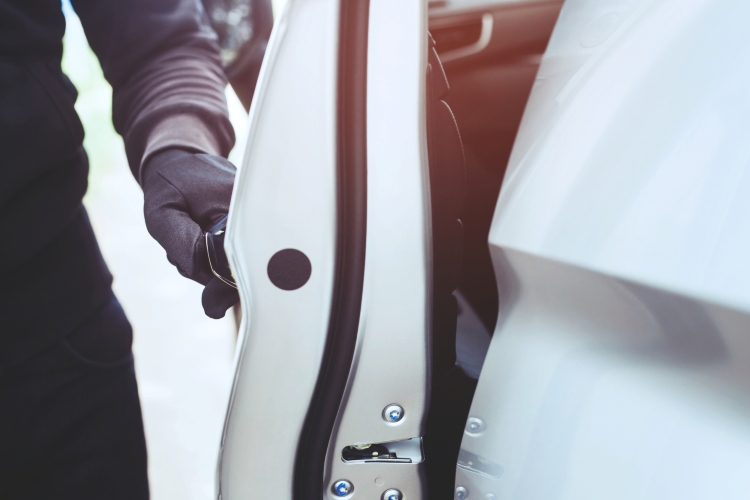Car manufacturers are selling a lot of cars worldwide, Statista reports total 2016 sales at over 76 million and projecting 2017 sales of over 77 million – but they’re also building cars with a lot more modern gear. The last few years have seen a boom in new auto technology and car features, with new infotainment and navigation dashboards, convenience, car safety features, and automation features, and even new autonomous technologies helping to redefine road safety.
If the early 1900s were the “birth of the auto,” then the twenty-first century is the “era of the high-tech car.” Just look at big new car features that are soon going to be standard on nearly every car rolling off the assembly line.
Many of these new innovations are car safety features and will have a huge impact on helping drivers avoid some types of dangerous collisions. Some have already been mandated by U.S. government agencies and are being phased in right now. In short, the car of the future is going to have all these safety and convenience features built-in, along with much more in innovative engineering.
New Car Safety Features
Once associated with only the latest and best cars, high-tech car safety features are becoming standard in most new cars. These new auto safety features are changing the way we drive. From back-up cameras to automatic braking, safety features in new cars continue to progress. While these features are neat, none of these are new car safety features that lower car insurance.
Back-Up Cameras
Right now, back-up cameras are still being sold as a top option and part of an advanced features package. But backup cameras will be mandated in all new cars by 2018, according to this L.A. Times article.

It just makes sense – as those of us with older models continue to fool around with mirrors, crane our heads toward the rear window, and agonize as we parallel park, we have an intuitive understanding of how much easier the whole thing would be with cameras. But it takes driving one of the newer camera-equipped cars to understand exactly why old “analog” backup driving will soon be phased out, and why cameras are more of a practical addition and are new car safety features versus a fancy convenience feature.
Automatic Braking
With automatic braking, a car senses a front obstacle and slows down on its own, without the driver ever having to apply the brakes.
Automatic braking is one of the best auto safety features. This new technology can be called several different names. Some call it “forward collision prevention” but many know it as “automatic braking.” Some cars have sensors that will alert the driver, but now more than ever, manufacturers are skipping the middleman and having the cars just brake themselves.
This new car safety feature has vast potential to save lives. It helps with big issues like driver distraction and corrects for many kinds of problems that drivers can have on the road, like glare and blind spots. Car manufacturers are dedicated to making it standard on vehicles by 2022.
Adaptive Cruise Control
Not too many years ago, cruise control was an add-on car feature, a “top trim” offering on many cars. But now car-makers are making this a common feature on nearly all models. There’s no hard and fast timeline for adoption, but back in 2011, Jessica Anderson, a writer at Kiplinger suggested that this type of automation will be standard on most cars within five years – and we’ve seen a lot of progress on it since then.

Cruise control helps save energy, whether it’s gas or electricity, and it can help with road safety, too. Having vehicles move at smooth, controlled speeds on highways can be crucial for the kind of coordination that it takes to prevent serious accidents at high speeds, which is another reason why this feature really should be standard on all cars.
Side Blind Zone Alert
Side blind zone alerts use radar sensors in the back corners of vehicles to warn drivers when a car is in their blind spot. These sensors alert drivers by lighting up a symbol on the side view mirrors. Currently, this car safety feature can usually be turned on or off, and they only work if they are turned on.
Other Anticipated Car Features
EPA Miles Per Gallon Ratings
Fuel economy labeling is another car feature that’s still relatively new.
It wasn’t too long ago that the MPG information was something you had to dig for. Before strict new emissions rules went into effect, cars guzzled gas at astounding rates.
Now, hybrids and plug-ins are just part of how new technology is changing the game in terms of fuel economy. We’ve seen what happens when companies are left to their own devices – for example, the VW scandal that has driven massive recalls and other big problems. With that in mind, the U.S. EPA is now saying the fuel economy labels will be mandatory by 2022, and in addition, auto-makers will be required to update numbers if miles-per-gallon values are shown to be inaccurate.
OBD-II Diagnostic Ports
The OBD-II port is a connector that’s plugged into a vehicle’s engine, and terminates somewhere under the dash, usually around the driver’s legroom area. This car feature doesn’t sound like much, but it represents another huge advance in how we use our cars. One of the primary uses of the port is to read engine codes to help mechanics figure out what’s wrong with a vehicle’s engine system, but since OBD is standardized, aftermarket companies can also build services that work through these ports in many ways.

It was back in 1996 that the OBD-II first became standard on all vehicles, but regulators have made changes to these ports since then.
Drivers can use these high-tech connective devices to monitor where a vehicle goes. They can also use it to diagnose some car problems, which helps when talking to a mechanic. Commuters and the self-employed can use it for mileage tracking. Some OBD-II services may be useful for insurance shopping or record-keeping as well. There are many new services that use the OBD-II port to offer drivers and passengers a more connected experience.
Look for all these neat new car features to become a part of all new cars rolling off the assembly line within just a few years. Features like these are part of how auto-makers are re-inventing the modern vehicle and changing how we ride.







Definitely all these improvements have helped, lane detection is I think the number one improvement.